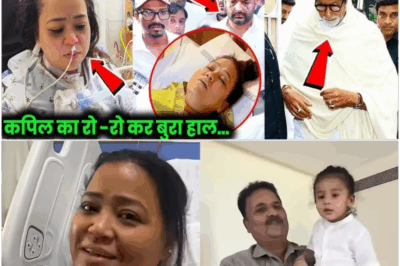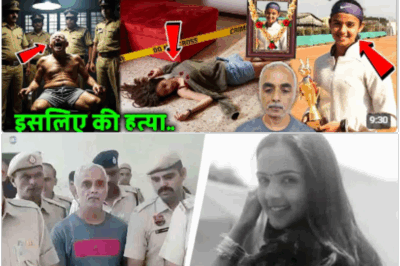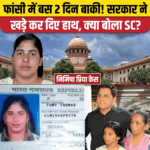Chhangur Baba Case: You will be shocked to hear the story of the girls trapped in the trap of illegal conversion
Jalaluddin—better known as Chhangur Baba—once a trader turned self-proclaimed “Pir Baba,” is at the heart of a sprawling illegal conversion network that shockingly operated for over 15 years across several Indian states and even internationally. His arrest by the Uttar Pradesh Anti-Terrorism Squad (ATS) has exposed a deeply rooted criminal enterprise utilizing coercion, allurement, and deception to convert vulnerable individuals—especially Hindu women and girls—to Islam .
Authorities allege that the network converted more than 1,500 Hindu women and thousands of others. They lured their targets through promises of marriage, financial aid, and false job offers, frequently masquerading as devotional gatherings or fake NGOs. In many cases, honors and rituals followed coerced conversions, and victims were allegedly gang-raped and blackmailed into compliance .
Investigative revelations show a well-organized syndicate. Chhangur Baba reportedly operated with over 40 bank accounts, conducted financial transactions worth approximately ₹100 crore, and spent extensively on dubious property purchases—like a lavish mansion in Balrampur’s Utraula valued at ₹3 crore, featuring over 70 rooms, a private power station, CCTV, and electric fencing . After his arrest on July 5, the mansion and other illegal structures—including his girlfriend Neetu’s property—were demolished by bulldozer as part of a crackdown on illicit assets .

The funds fueling this network traced back to the Middle East and possibly even Switzerland. Investigators uncovered evidence of foreign funding funnelled to support conversions and property acquisitions. Chhangur Baba’s son reportedly held a Swiss bank account, and associates made multiple visits to Gulf countries to manage money transfers .
Police inquiries extended beyond Uttar Pradesh, reaching Maharashtra and districts along the Nepal border as the ATS aims to map out the syndicate’s scope. Key aides like Idul Islam in Maharashtra and Ramzan in Gonda have also come under surveillance . Meanwhile, Enforcement Directorate (ED) has launched a parallel money‑laundering case, citing ₹51 crore in illicitly obtained funds through conversion activities .
Victims have come forward courageously. One woman from Bengaluru detailed being lured to Dubai under false pretexts, converted, raped, and held captive. Another from Auraiya alleged she was drugged, converted, and married off in a men’s hostel—but fled and alerted authorities. Legal loopholes and inaction impeded initial registration of their complaints .
The scale and severity of the racket have provoked a strong response from authorities. Uttar Pradesh Chief Minister Yogi Adityanath condemned the scheme as not only anti-social but anti-national, vowing exemplary punishment for Chhangur Baba and the confiscation of his assets . Babita Chauhan, head of the State Commission for Women, demanded the death penalty for those convicted under the stringent 2020 anti-conversion law, describing the syndicate’s tactics as a “well-planned conspiracy” that violated the dignity and safety of daughters and sisters .

Operational details reveal chilling precision: conversion rates were fixed by caste—₹16 lakh for Brahmin/Thakur girls, ₹10–12 lakh for women from other backward castes, and ₹8–10 lakh for others . Victims were manipulated via romantic or familial bonds, pressured via threats of false police cases, and coerced into religious rituals under duress .
Despite its vast reach, the network remained unnoticed by authorities for over a decade—raising uncomfortable questions about institutional failure. How did such an extensive operation hide in plain sight, and why did intelligence and law enforcement agencies miss the signs? The ATS is now under scrutiny for these lapses even as it aggressively pursues remaining links and continues unraveling the syndicate’s financial and logistical web .
As investigations broaden, scrutiny has reached remote districts and international nodes. ATS teams have traced operational footprints in Maharashtra, Pilibhit, Bahraich, Gonda, and even Nagpur, while the ED investigates multi-state money laundering. Confiscation of illegal assets and freezing of bank accounts are in progress .

The case exemplifies the UP Prohibition of Unlawful Religious Conversion Act, 2020, which mandates severe penalties—including 20 years to life imprisonment—for conversions by force, fraud, or allurement .
The aftermath has ignited intense public debate, pitting questions of religious freedom against the need to curb exploitative conversions. Hindu activists and public figures have rallied behind demands for justice, and victims have issued powerful pleas for protection for themselves and others at risk .
As the ATS continues to decode massive financial and communication trails, and as demolition of illegal estates continues, one looming question remains: will the remaining financiers, international links, and local cogs in this machine finally be brought to justice? Only time will reveal the full extent of this syndicate—and whether the system can ensure accountability and protection for its most vulnerable targets.
Play video :
News
Burak’ın gelininin Burak Özçivit’e söylediği “Ablamdan uzak dur.” sözlerinin etkisi
Burak’ın gelininin Burak Özçivit’e söylediği “Ablamdan uzak dur.” sözlerinin etkisi. . . . “Ablamdan Uzak Dur!”: Burak Özçivit’in Yeni İlişkisine…
Demet Özdemir ve Can Yaman İstanbul’da yeniden bir araya geliyor… ve her şey Sara Bluma ile kötü bitiyor 💔
Demet Özdemir ve Can Yaman İstanbul’da yeniden bir araya geliyor… ve her şey Sara Bluma ile kötü bitiyor 💔 ….
Bharti Battles Deadly Illness –Husband Haarsh Breaks Down,Gola in Tears After Doctor’s Final Words
Bharti Battles Deadly Illness –Husband Haarsh Breaks Down,Gola in Tears After Doctor’s Final Words . . . Bharti Singh’s Silent…
Aishwarya Aaradhya bachchan during event! Aaradhya Bachchan taller than mom Aishwarya Rai !!
Aishwarya Aaradhya bachchan during event! Aaradhya Bachchan taller than mom Aishwarya Rai !! . . . Aaradhya Bachchan Steals the…
After cancer, Dipika Kakar is now suffering from another deadly disease, asks fans to pray
After cancer, Dipika Kakar is now suffering from another deadly disease, asks fans to pray. . . . After Cancer,…
Radhika’s father revealed the truth in the remand room, shocking revelations were made! Radhika Yadav Murder Case
Radhika’s father revealed the truth in the remand room, shocking revelations were made! Radhika Yadav Murder Case . . ….
End of content
No more pages to load












